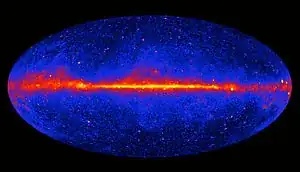This is a very layman level question. I watch a lot of documentaries, that's my only qualification. I have seen in documentaries that gamma rays have an extraordinary penetrating power. So if we could have a gamma ray gun on one end of planet Jupiter and something analogous to an X-Ray film of the other end, would it be possible to take an X-Ray ? Can or Is this penetrating property of gamma rays being used in science?
3 Answers
Gamma rays are very high energy electromagnetic radiation with very short wavelengths (on the order of picometers), which does make them remarkably well-suited to penetrate/pass through objects. Wikipedia provides a great description on all of the characteristics and applications of Gamma Rays. There are, in fact, many uses for Gamma rays in science already and some applications that make use of its penetrating property. However, Making a tomographic scan of a planet using gamma rays would not be possible. The Wikipedia article states that even the relatively thin atmosphere of Earth is sufficient to block or absorb most of the gamma rays incident to Earth. With a significantly larger atmosphere, the rays would not be able to pass through Jupiter, or even penetrate very far through the most upper regions of it. Furthermore, having a rocky planet-part (as is believed most gas-giants have) at the core, the gamma rays would have an even more difficult time penetrating through that. In theory, high enough energy gamma rays could penetrate through to the other side of Jupiter; however, we do not possess the capability of creating rays with that much energy.
In short, yes we can use gamma rays for science, but not to make tomographic maps of planets.
- 24,676
In answering the title"Can gamma rays be used to investigate heavenly bodies?" and not the content, one should be informed that gamma rays are used for heavenly body investigations, of heavenly bodies much further away than Jupiter and very much bigger, in gamma ray astronomy.
Gamma-rays in the MeV range are generated in solar flares (and even in the Earth's atmosphere), but gamma-rays in the GeV range do not originate in our solar system and are important in the study of extrasolar, and especially extra-galactic astronomy. The mechanisms emitting gamma-rays are diverse, mostly identical with those emitting X-rays but at higher energies, including electron-positron annihilation, the Inverse Compton Effect, and in some cases also the decay of radioactive material (gamma decay) in space2 reflecting extreme events such as supernovae and hypernovae, and the behaviour of matter under extreme conditions, as in pulsars and blazars. The highest photon energies measured to date are in the TeV range, the record being held by an "extraordinary outburst" of blazar Markarian 501 in 1997, yielding photons with as much as 16 TeV.

First survey of the sky at energies above 1 GeV, colleced by the Fermi Gamma-ray Space Telescope in three years of observation (2009 to 2011)
- 236,935
With X-Ray or Electromagnetic Radiation in general it is not possible
However, it is known that the Neutrino field has Flavour oscillations in vacuum. Also, the oscillation rate is not independent of the presence of matter, which means that the oscillation encounters an effective refraction index dependent on matter density. Hence, observation of the flavor of energetic Solar Neutrinos (> 2 MeV) might give direct information about the cores of planets, including Earth, and Jupiter
- 14,933